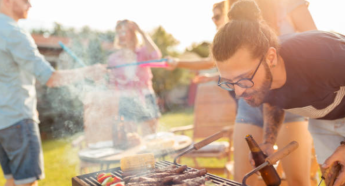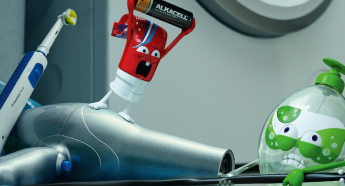How Tearing Off a Sleeve Can Make Sure That Your Plastic Pot or Bottle Gets Sorted Correctly
You may not have noticed it yet, but you will now see a tear line on more and more bottles and pots. These are covered from top to bottom in a film or cardboard wrapper, called sleeve. These sleeves should be taken off.
More and more plastic bottles are now wrapped in sleeves. These are plastic films that completely cover a bottle. They are not only used to make the packaging look colourful, but, in the case of transparent PET bottles, they are intended to prevent deterioration of the contents. This is because some liquids such as dairy products are very sensitive to sunlight. However, a sleeve can prevent the sorting facility from recognising the bottle itself. The contents of the blue bag are sorted into 16 different material flows. Four of these are PET bottles: clear PET, blue PET, coloured PET and opaque PET. If a PET bottle still has a sleeve around it, it is very likely that the sorting machine will not allocate it to the correct PET stream.
The tear line or zip therefore provides an easy way to remove the sleeve. The PET bottle, which is perfectly recyclable, can then be correctly recognised and recycled, and the plastic sleeve itself also gets allocated to the correct material flow.


How about cardboard sleeves?
Cardboard sleeves are often used around plastic pots, like yoghurt pots or plastic boxes of laundry detergent. Once again, the message is simple: take the wrapper off so that your plastic pot can be sorted and recycled correctly. Unlike plastic sleeves, however, you don't put cardboard sleeves in PMD, they go into paper/cardboard. This way, the cardboard sleeves can be recycled too.
Other doubts about sorting waste? Full in what you want to recycle on top of this page and get the answer right away!












